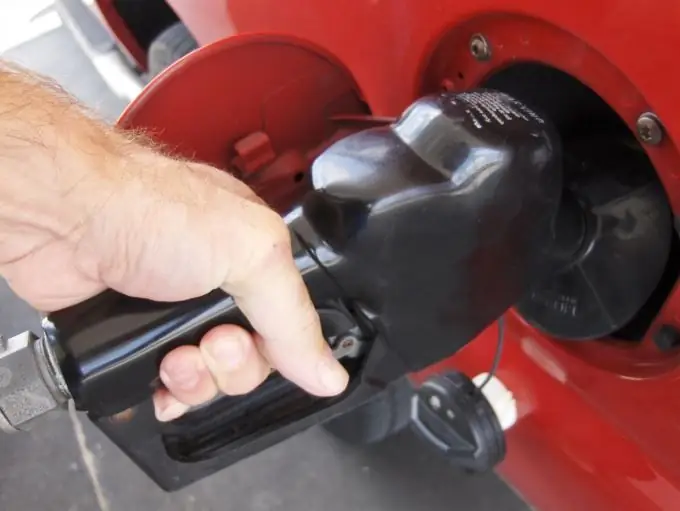- Author Maria Gibbs [email protected].
- Public 2023-12-16 03:05.
- Last modified 2025-01-22 17:48.
Gasoline prices rise periodically, albeit by a few kopecks, but steadily. But does this guarantee the quality of the product, because not only the movement of the car, in principle, but also the service life of spare parts, sometimes not cheap, depends on gasoline. In order to understand how high-quality gasoline you buy, it is not at all necessary to have a chemical laboratory.

Necessary
- - paper,
- - glass,
- - lead of a chemical pencil or potassium permanganate.
Instructions
Step 1
Pay attention to the color. Gasoline is a transparent liquid. And if you notice some kind of turbidity, it means that there are foreign impurities.
Step 2
Dampen a regular white sheet of paper with a drop of gasoline and blow on the spot to evaporate the gasoline. If there is nothing left on the sheet - the fuel is of high quality, if you notice a greasy spot - gasoline with an admixture, possibly with kerosene.
Step 3
To find out if gasoline contains tar, put a drop of the tested liquid on the glass and light this drop. The appearance of white concentric circles on the glass indicates quality, but brown ones indicate the presence of resins that can harm your car's engine. If small droplets remain on the glass, it means that the gasoline is mixed with oil or diesel.
Step 4
Pour a little gasoline into a transparent bowl and look at the light, the liquid will be pale yellow. Add potassium permanganate or a chemical pencil lead there. If the fuel changes its color to purple or pink, then it is mixed with water.
Step 5
Put a few drops of gasoline on your hand. If you feel that the drops dry out quickly, the product is of high quality, and if there is a feeling of grease, then there are impurities.
Step 6
Smell the gasoline. A sulfur smell will indicate the presence of naphthalene, LPG, or hydrogen sulfide.
Step 7
Before refueling, feel the neck of the gas station pistol, which most often comes into contact with fuel. If the edges are greasy, then this gas station is low-quality gasoline. And accordingly, if the neck is dry enough to the touch, then you can safely refuel your car.
Step 8
Listen to your car. If it is filled with bad gasoline, you will immediately feel poor traction, discomfort in driving, an increase in consumption, and detonation in the engine may occur.
Step 9
When checking gasoline for quality, observe safety precautions as much as possible, as it is a flammable and explosive substance.






